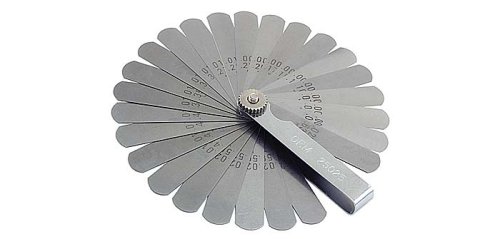dicko
Boston Bay Brewery
- Joined
- 11/1/04
- Messages
- 3,393
- Reaction score
- 578
What I have done with my Feeler Gauges is take the most expected combinations of strips of gauge for a grain mill setting and place them in reasonably useable order on the centre screw and nut of the set.Ducatiboy stu said:You will need a " Mill Gap measuring device"
Credit cards are about 1mm or go and get a set of feeler gauges

In this way, if you have combined the most common mill gap settings ie; 9mm to 1.2mm close to each other than you aren't trying to wrangle two combined strips from opposing ends of the pack.
Doing this still allows you to adjust the ignition points on your delco holden / morris lucas distrbutor or set the tappets if you are a car enthusiast. :lol:




